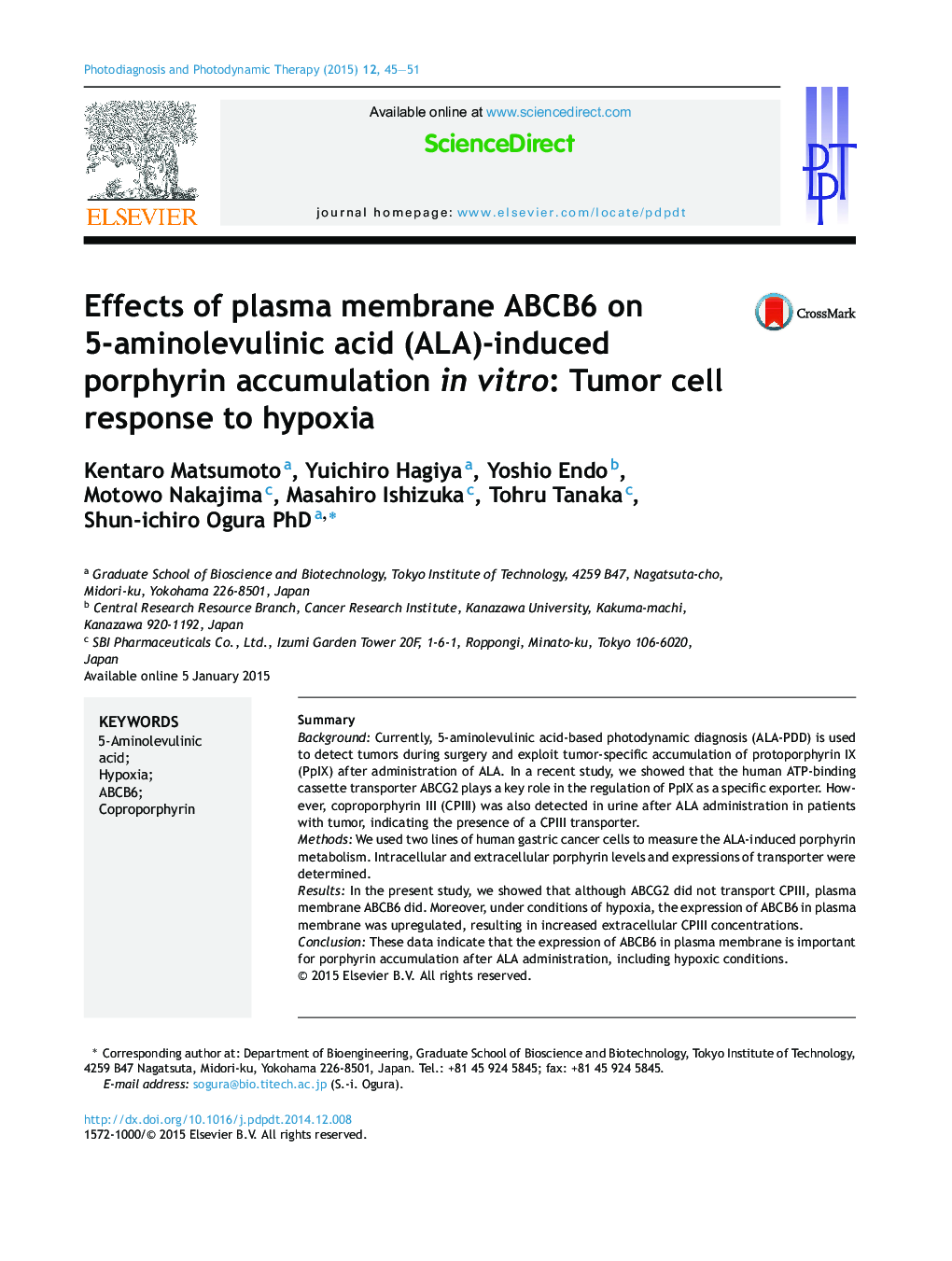| کد مقاله | کد نشریه | سال انتشار | مقاله انگلیسی | نسخه تمام متن |
|---|---|---|---|---|
| 6154845 | 1246344 | 2015 | 7 صفحه PDF | دانلود رایگان |

- We showed that although ABCG2 did not transport CPIII, plasma membrane ABCB6 did.
- Under conditions of hypoxia, the expression of ABCB6 was upregulated.
- Expression of ABCB6 on plasma membranes is important for porphyrin accumulation.
SummaryBackgroundCurrently, 5-aminolevulinic acid-based photodynamic diagnosis (ALA-PDD) is used to detect tumors during surgery and exploit tumor-specific accumulation of protoporphyrin IX (PpIX) after administration of ALA. In a recent study, we showed that the human ATP-binding cassette transporter ABCG2 plays a key role in the regulation of PpIX as a specific exporter. However, coproporphyrin III (CPIII) was also detected in urine after ALA administration in patients with tumor, indicating the presence of a CPIII transporter.MethodsWe used two lines of human gastric cancer cells to measure the ALA-induced porphyrin metabolism. Intracellular and extracellular porphyrin levels and expressions of transporter were determined.ResultsIn the present study, we showed that although ABCG2 did not transport CPIII, plasma membrane ABCB6 did. Moreover, under conditions of hypoxia, the expression of ABCB6 in plasma membrane was upregulated, resulting in increased extracellular CPIII concentrations.ConclusionThese data indicate that the expression of ABCB6 in plasma membrane is important for porphyrin accumulation after ALA administration, including hypoxic conditions.
Journal: Photodiagnosis and Photodynamic Therapy - Volume 12, Issue 1, March 2015, Pages 45-51